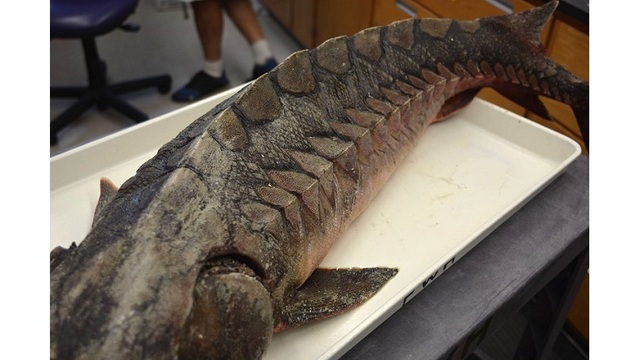TAMPA, Fla. (WFLA) — The scaly carcass of a Gulf sturgeon washed up on the shores of Davis Island this week, wildlife officials said.
The fish, nicknamed the “living dinosaur,” was discovered by a citizen who reported the finding to the FWC’s Fish Kill Hotline.

A team of scientists came down and recovered the sturgeon, then later performed a necropsy to collect samples of the fish, which will be preserved as part of the Fish and Wildlife Research Institute’s collections.
It’s extremely rare to see a Gulf sturgeon in the Tampa Bay area. In 1991, the fish was listed as threatened under the Endangered Species Act.
The sturgeon is an anadromous fish, meaning they spend most of their year in freshwater, then migrate to saltwater in the fall.
The fish can be found in several rivers throughout Florida and Louisiana, including the Suwannee River.
The Gulf sturgeon, which is known as an “ancient fish”, first appeared in the fossil record 225 million years ago.
According to the FWC’s website, the sturgeon can live more than 40 years and grow more than six feet in length. They sport bony plates on their head and body, have fleshy “whiskers” on their snout and no internal skeleton.
For more information on the fish, visit http://bit.ly/2sZzdun

























